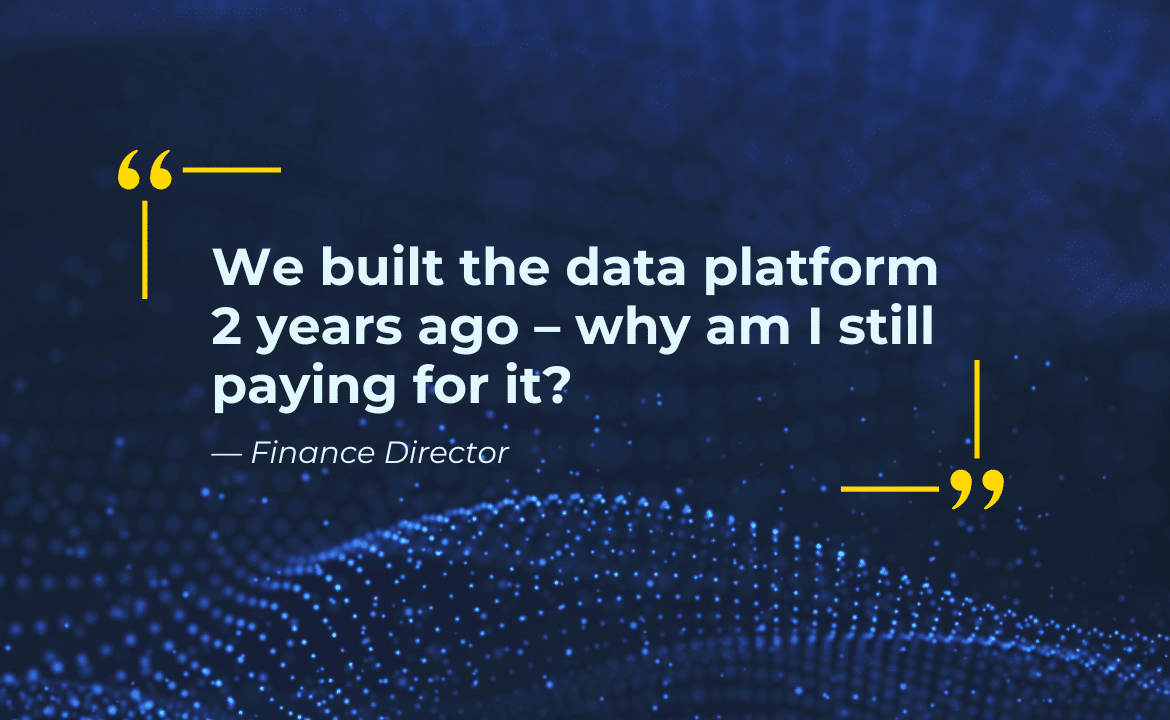Data leaders are always aware of the challenges of keeping existing data pipelines running while meeting demands for new data to meet emerging business challenges. They are always conscious of needing to make an ROI, but sometimes struggle to show that return.
They also know that data is not a one-off cost, and that keeping those data taps on requires ongoing investment. This can be confusing for the people who ultimately look after the purse-strings. “We built the data platform 2 years ago – why am I still paying for it?” ask finance directors. You can understand their frustration, but we know the reality is that data is as complex as any other technology in the business, and does need ongoing effort to keep it running.
So how can finance and data leaders understand each other better? As a Director of Digital Product & Technology, and someone who often works as the interface between the business functions (where the value lies) and the technology departments (who provide the means to get it), I have often acted as the conduit that helps them understand each other better.
For data leaders
Keep a commercial head on
Understand the value of the data products you’re creating and make your technology choices accordingly. Some technology departments don’t always put commercial operating constraints and value front and centre – be better than them!
Be real about the ongoing costs
Many finance directors have been burnt by promises of “turn-key, zero-touch solutions”, or wary of investing in solutions that have not delivered value. Try not to add to their scepticism on costs.
I advise data leaders to shift the perception of data as a cost to data as a value-driver.If you can clearly and regularly show that data is a key part of meeting business goals, your conversation will become much more productive and welcomed, which brings me to my next point.
Develop a means of showing data value at a regular cadence
I have often used the concept of an annual budget as something against which I draw down each quarter, and at the end of the quarter show the value that has been produced.
(This does involve an element of planning and realism. You’ll need to be able to say, “Operationally we’ll need $X to run the team and tech, but we’ll deliver value of $Y, plus these other benefits.”)
I want to stress this shouldn’t be too detailed. Spreadsheets of line items are a trap that ends up delivering value for no-one. Instead, cover 3-4 priority areas which show how data has impacted business departments. Showing how your competitors are investing in data, and their successes with it, is always a good strategy too. Often these value statements can be related to speed of decision-making in the business.
For finance directors
Data is never a one-off cost. There are various reasons for this, such as:
- Upstream data sources change and the pipelines need amending to keep on working
- New business drivers for data are constantly arising (leading to demands for changes to data products or demand for the creation of new ones)
- Technology stacks which change rapidly and will need base level maintenance just to stand still. Even the simplest data platform will need patching from time to time.
A good rule of thumb is to budget about 20% of data cost for keeping a steady ship. This ‘always-on cost’ is essential to allow you to respond to ever changing market demands quickly and easily, and is required to ensure you don’t get a far larger bill every three years in an area that will underpin more radical transformation (dare we say: AI). It also holds the Data & Technology teams accountable on the value they’re generating – a deal which can only be mutually beneficial.




